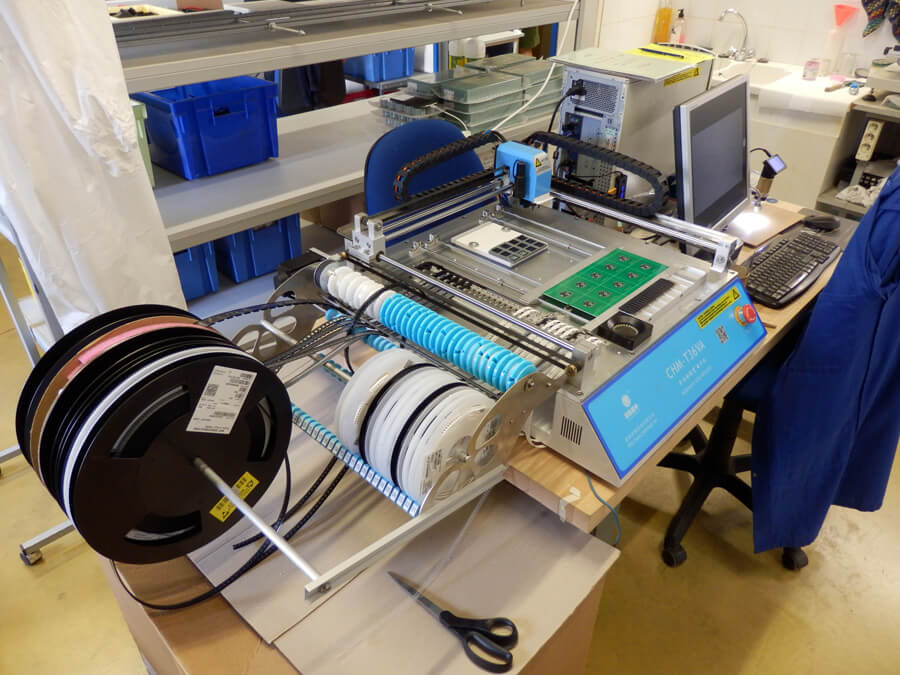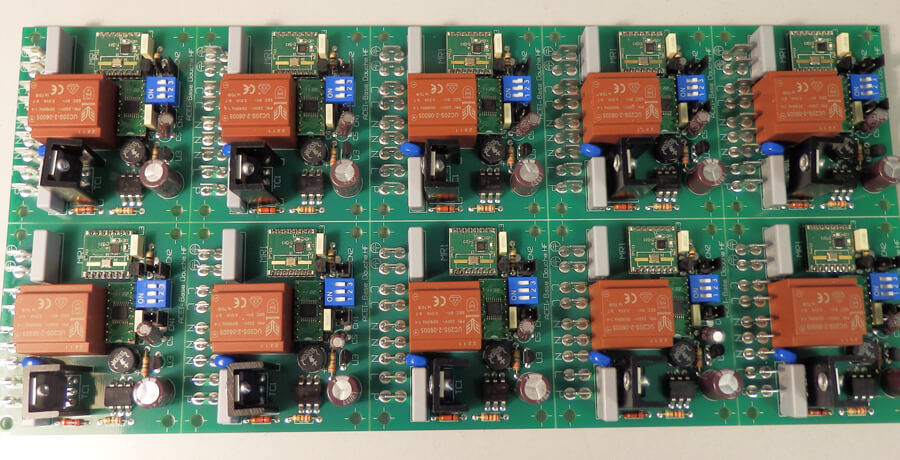Main activity of the company: design, development and mass production of small ”embedded” electronic systems, i.e. autonomous electronic systems using micro-controllers, which perform a specific task within the devices to which they are integrated.
This task consists of processing input data, in order to produce output actions: when the input data has been collected and analyzed, the microcontroller performs commands on the outputs according to the data collected at the input, according to the software that has been designed and programmed into it.

Entries can be of different kinds:
Environment sensors : temperature, pressure, luminosity, humidity, movement, vibration, position contacts, voltage or current measurements.
User controls : buttons, touch screens, potentiometers.
Infrared or high frequency remote control receiver.
Wired communication lines, I²C, RS485, CAN…
Outputs can be :
Display of information on screen or on LEDs.
Emission of infrared or high frequency radiowave information to another system.
Actuators: motors, solenoid valves, coils, heating resistors.
Activation of sirens, buzzers, projectors, LED lighting.
These systems can be powered by 115 / 230V mains voltage, or by batteries of various sizes (12 / 24V, small batteries…)

We make a large part of our boards using traditional so-called “through-hole” components, which is an old but reliable technology. The reason is that some electronic components have little or no equivalent in SMD version: such as relays, coils, or other power stage components. So it is easier for these specific applications to keep using the traditional component.
However, we also offer our customers the possibility of making SMD boards (Surface Mounted Device), if the application allows or requires it: it is the ideal choice for circuits whose size is to be reduced (IoT devices for example…) as well as their power consumption (we can design automatic standby and low power consumption devices).
Once the prototype of your electronic card has been developed by us (or by yourself in the context of a request for subcontracting) comes the production stage: we receive the raw printed circuit boards (blank boards) and the components from our usual reliable suppliers, then our cablers install the components. A first visual inspection takes place to check the validity of the components, then the boards go to the soldering machines: each assembled board passes over a first wave which deposits flux (allowing “clean” solderings) then over a second wave of molten solder which ensures the soldering of the components. A visual inspection takes place after soldering to ensure the quality of this step, and (optionally) the cards are then passed on automated test benches to ensure their proper functioning. All these checks allow optimal quality, which is why we have almost no returns for manufacturing defects.
Contact us
SAS ACEI
10 Rue des Frères Lumière
ZAC Clément Ader, 34830 JACOU
2022Copyright | ACEI | Legal Notice | Creation of website, Keole.net